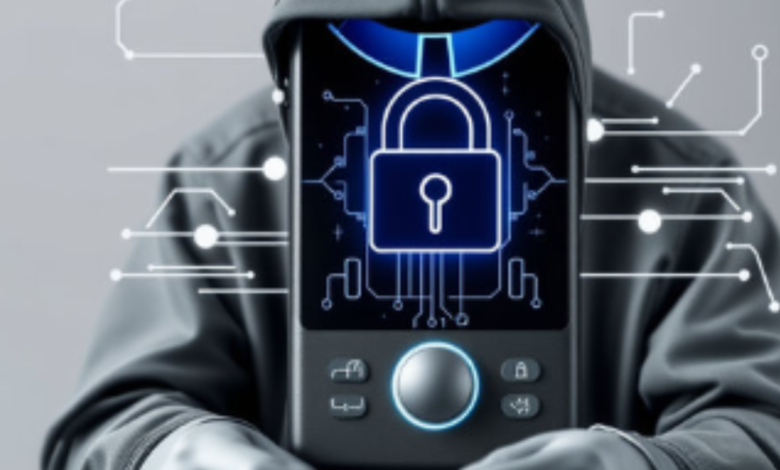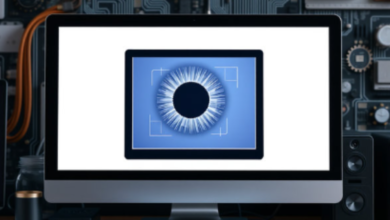Protect Privacy Smart Devices: Unlocking Your Smart Home’s Secret Security Safeguards!

The modern world is increasingly intertwined with technology, and our homes are no exception. Smart devices, from voice assistants and smart thermostats to security cameras and door locks, offer convenience and comfort. But with this convenience comes a crucial concern: privacy. These seemingly innocuous devices can collect vast amounts of personal data, leaving us vulnerable vulnerable to potential security breaches and privacy violations.
This guide will equip you with the knowledge and tools to protect privacy smart devices and reclaim control over your digital footprint within your own home. We’ll delve into the potential dangers lurking in your “smart” home, explore essential security measures like strong passwords and two-factor authentication, and guide yuo through setting up secure networks to safeguard your data. Get ready to unlock your smart home’s secret security safeguards and enjoy the benefits of a connected home while maintaining peace of mind!
Wow! The Dangers Lurking in Your “Smart” Home
The allure of a “smart” home is undeniable. Imagine controlling your lights, adjusting your thermostat, and locking your doors all with a simple voice command or a tap on your phone. HOwever, this convenience comes at a cost. Many smart devices are constantly collecting data, from your location and browsing history to your voice recordings and daily routines.
This data collection can can have significant implications for your privacy.
- Data Breaches: If a company storing your smart device data experiences a security breach, your personal information could fall into the wrong hands. Hackers could access your home security footage, listen to your voice recordings, or even control your devices remotely.
- Surveillance Concerns: The constant monitoring monitoring of your activities by smart devices can raise privacy concerns. Some devices may be equipped with microphones and cameras, potentially allowing unauthorized access to your personal space.
- Targeted Advertising: The data collected by your smart devices can be used to create detailed profiles of your interests and habits. This information can then be used to target you with personalized advertisements, potentially invading your privacy.
- Government Surveillance: In some cases, government agencies may have access to teh data collected by your smart devices, raising concerns about potential government surveillance.
While the benefits of smart home technology are undeniable, it’s crucial to understand the potential risks and take proactive steps to protect privacy smart devices. By implementing robust security measures and being mindful of the data you share, you can enjoy the convenience of a connected home while maintaining control over your personal information.
Protect Privacy Smart Devices: A Beginner’s Guide to Strong Passwords
One of the most fundamental steps in protecting privacy smart devices is to create and maintain strong, unique passwords for each device and associated accounts. Weak passwords are a prime target for hackers, making it incredibly easy for them them to gain unauthorized access to your devices and data.
Here are some tips for creating strong passwords:
- Length: Aim for passwords that are at least 12 characters long. Longer passwords are significantly harder to crack.
- Complexity: Include a combination of uppercase and lowercase letters, numbers, and symbols.
- Uniqueness: Avoid using the same password for multiple accounts. If one account is compromised, hackers can easily gain access to others.
- Password Managers: Consider using using a password manager to generate, store, and securely manage your passwords.
Beyond strong passwords, it’s crucial to:
- Regularly update your passwords: Change your passwords periodically to minimize teh risk of a data breach.
- Avoid using easily guessable information: Steer clear of using personal information like birthdays, pet names, or social security numbers in your passwords.
- Be wary of phishing attempts: Phishing attacks attempt to trick you into revealing your passwords. Be vigilant and never click on suspicious links or open attachments from unknown senders.
By implementing these simple yet effective password password security measures, you can significantly enhance the security of your smart devices and protect privacy smart devices from unauthorized access.
Unlocking the Power of Two-Factor Authentication for Your Smart Devices
Two-factor authentication (2FA) adds an extra layer of security to your accounts by requiring two forms of identification before granting access. This significantly reduces teh risk of unauthorized access, even if your password is compromised.
Here’s how 2FA typically works:
- Password: You enter your primary password as usual.
- Second Factor: You provide a second form form of verification, such as:
- Authentication app: A time-based one-time password (TOTP) generated by an authenticator app on your smartphone.
- SMS message: A unique code sent to your registered mobile phone number.
- Security key: A small physical device that generates unique codes.
Many smart devices and associated services support 2FA.
Benefits of enabling 2FA for your smart devices:
- Enhanced security: 2FA significantly reduces the risk of unauthorized access, even if your password is compromised.
- Increased peace of mind: Knowing that your accounts are protected by an extra layer of security can provide significant peace of mind.
- Reduced risk of data breaches: By making it harder for hackers to gain access to your accounts, 2FA helps to minimize the risk of data breaches.
To enable 2FA for your smart devices:
- Access your account settings: Locate the security or privacy settings within your device’s app or online account.
- Enable 2FA: Look for the option to enable two-factor authentication and follow the on-screen instructions.
- Choose your preferred method: Select your preferred 2FA method, such as an authenticator app, SMS, or security key.
By unlocking the power of two-factor authentication for your smart devices, you can significantly enhance your account security and protect privacy smart devices from unauthorized access.
The Magic of Guest Networks: Keeping Your Smart Home Data Safe
When guests visit your home, its common to provide them with access to your Wi-Fi network. However, connecting guest devices to your primary network can pose a security risk.
- Increased vulnerability to attacks: Connecting guest devices to your primary network increases the overall attack surface, making your network more vulnerable to potential threats.
- Data exposure: Guest devices on your primary network can potentially access sensitive data on your home network, such as personal files and smart home device information.
Creating a separate guest network is a simple yet effective way to mitigate these risks.
Benefits of creating a guest network:
- Enhanced security: Isolating guest devices on a separate network significantly reduces the risk of unauthorized access to your primary network and personal data.
- Improved privacy: Guest devices on a separate network cannot access your personal devices or smart home devices, protecting your privacy.
- Simplified network management: Managing access for guest devices is easier with a separate network. You can easily control guest access and disconnect devices when necessary.
To create a guest network:
- Access your router’s settings: Log in to your router’s admin interface using your router’s IP address.
- Create a new network: Look for the option to create a separate Wi-Fi network for guests.
- Configure settings: Assign a unique name and password to your guest network. yuo can also limit the bandwidth available to guest devices.
- Share the network information with your guests: Provide your guests with the name and password of the guest network.
By utilizing the magic of guest networks, you can enhance the security of your home network, minimize the risk of data exposure, nad protect privacy smart devices while still providing convenient Wi-Fi access to your guests.
Protect Privacy Smart Devices: Simple Steps for Securing Your Home Network
Securing your home network is crucial for protecting privacy smart devices and safeguarding your personal data. HEre are some simple steps you can take to enhance your network security:
- Strong Wi-Fi password: Use a strong, unique password for your Wi-Fi network. Avoid using default passwords provided by your router manufacturer.
- Enable Wi-Fi Protected Access 2 (WPA2/WPA3): WPA2/WPA3 are the most secure Wi-Fi encryption protocols available. Enable them on your router to protect your network from unauthorized access.
- Regularly update your router’s firmware: Router firmware updates often include security patches that address vulnerabilities. Keep your router’s firmware up to date to ensure optimal security.
- Disable remote access: If yuo don’t need remote access to your router, disable it to minimize the risk of unauthorized access.
- Use a VPN: A Virtual Private Network (VPN) encrypts your internet traffic, making it more difficult for hackers to intercept your data.
By implementing these simple yet effective steps, you can significantly enhance the security of your home network, protect your privacy, and protect privacy smart devices from potential threats.
In the age of smart devices, protecting your privacy is more important than ever. By understanding the potential dangers, implementing robust security measures like strong passwords and two-factor authentication, and securing your home network, you can enjoy the benefits of a connected home while maintaining control over your personal information.
Remember, protecting your privacy is an ongoing process. process. Regularly review your security settings, stay informed about the latest security threats, and update your devices and software with the latest security patches. By taking these proactive steps, you can unlock your smart home’s secret security safeguards and enjoy a secure and private connected living experience.



